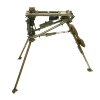We actually used quite a few POW's in agriculture as laborers in WWII. My grandfather was a farm manager at the time and had a few German POW's as laborers.
After reading the Camp Lordsburg historical marker, and being led to some of the remaining WW2 artifacts, I became interested in the Japanese internment during WW2.



Almost a quarter million Japanese Americans were put in concentration camps. And used as forced labor. They too were in agriculture, building roads, infer structure, etc. A shooting bud, his Dad was in the Dakota's. Some of Dad's agricultural buildings are still around. When the war ended, businesses and states did not want to give back their American slaves, and it took a court case to release all of them! Slaves are so profitable to the owner!

Camp Lordsburg was unusual in that it had Japanese American's, Germans and Italians in one Camp.
I am reading this book.
Nazi Prisoners of War in America
There were slightly less than a half million German/Italian POW's in the US. The US scrupulously followed the Geneva Conventions which required the POW's be treated no more, no less than US servicemen. So the Camps, food, etc, were equivalent. And in many cases, better than what the Germans had in service. They loved the food!
The Geneva conventions allowed POW work in "Non Military" industries. That got defined as, more or less, if they touched tank parts, but not the tank, that was non military. Unlike in Germany where slaves built artillery, firearms, tanks, etc. Unhappy workers do not make good product. This is why German mid war weapons, to include P-38's have a well deserved post war reputation for breaking!
Thinking about shooting your WW2 P.38?
The greatest use of German POW's was in agriculture and forestry. This was hard work, especially in the Southern states. Incidentally, a German got about 80 cents a day in script which allowed them to buy things from the PX and if they were bad, they got docked pay and bread and water. If they saved their money, they got to take US cash to Germany and that was important as the German economy had collapsed. It worked. Shootings were rare, no mutinies. I think more Germans were murdered by ardent camp Nazi's for being defeatists than by Camp Guards.
In spite of vocal Americans who demonized and then wanted to punish and hurt German POW's, German POW's were very well treated, and acted very well. The farmers did not want to give them up, (Slaves are so profitable to the owner!

) and for many Germans, the best years of their lives were in fact, as a POW in the US. It paid off later in good relations with Germany.
No one wanted to be a POW in Russia!
German prisoners of war in the Soviet Union
Even the British were reluctant to give up their German POW's. They used them as forced labor until 1948, (three years after the end of the war!) primarily because businesses have a hard time giving up their slave labor. Slaves are so profitable to the owner!

German prisoners of war in the United Kingdom






